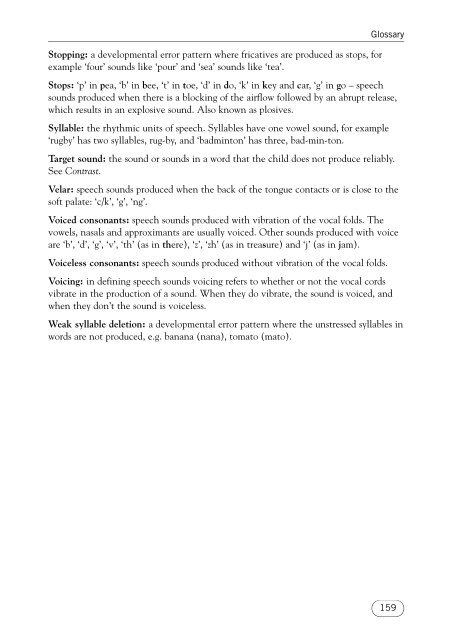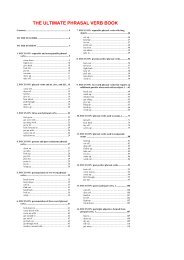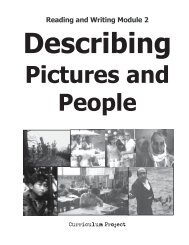Developing Speech and Language Skills - Noel's ESL eBook Library
Developing Speech and Language Skills - Noel's ESL eBook Library
Developing Speech and Language Skills - Noel's ESL eBook Library
Create successful ePaper yourself
Turn your PDF publications into a flip-book with our unique Google optimized e-Paper software.
Stopping: a developmental error pattern where fricatives are produced as stops, forexample ‘four’ sounds like ‘pour’ <strong>and</strong> ‘sea’ sounds like ‘tea’.GlossaryStops: ‘p’ in pea, ‘b’ in bee, ‘t’ in toe, ‘d’ in do, ‘k’ in key <strong>and</strong> car, ‘g’ in go – speechsounds produced when there is a blocking of the airflow followed by an abrupt release,which results in an explosive sound. Also known as plosives.Syllable: the rhythmic units of speech. Syllables have one vowel sound, for example‘rugby’ has two syllables, rug-by, <strong>and</strong> ‘badminton’ has three, bad-min-ton.Target sound: the sound or sounds in a word that the child does not produce reliably.See Contrast.Velar: speech sounds produced when the back of the tongue contacts or is close to thesoft palate: ‘c/k’, ‘g’, ‘ng’.Voiced consonants: speech sounds produced with vibration of the vocal folds. Thevowels, nasals <strong>and</strong> approximants are usually voiced. Other sounds produced with voiceare ‘b’, ‘d’, ‘g’, ‘v’, ‘th’ (as in there), ‘z’, ‘zh’ (as in treasure) <strong>and</strong> ‘j’ (as in jam).Voiceless consonants: speech sounds produced without vibration of the vocal folds.Voicing: in defining speech sounds voicing refers to whether or not the vocal cordsvibrate in the production of a sound. When they do vibrate, the sound is voiced, <strong>and</strong>when they don’t the sound is voiceless.Weak syllable deletion: a developmental error pattern where the unstressed syllables inwords are not produced, e.g. banana (nana), tomato (mato).159











